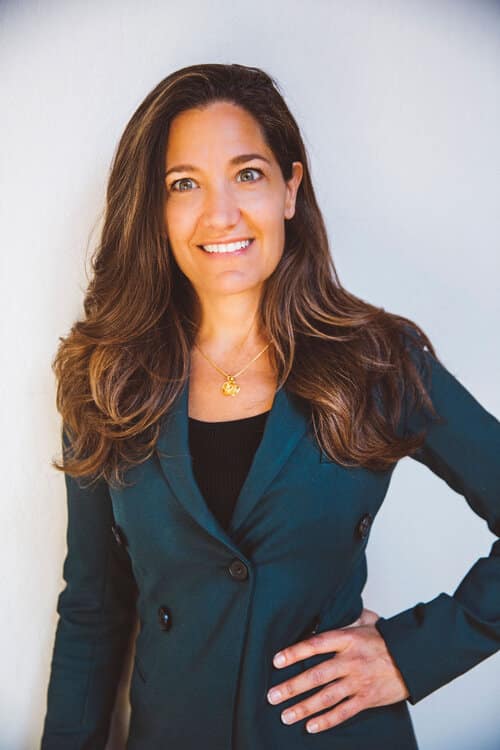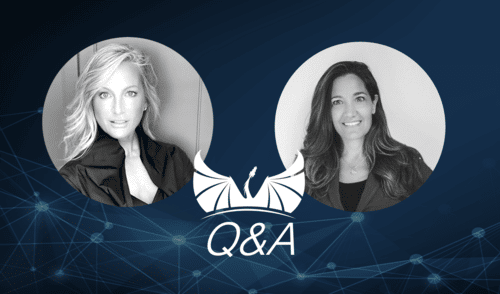As a woman in cybersecurity, I found I never really noticed I was the only woman in the room until I wasn’t. I felt a moment of lightness when a new female leader also joined the team, as well as more supported and understood.

Over the past few years, we have seen increasing attention paid to these industry shortcomings when it comes to gender disparity and the need to increase all forms of diversity. While it is great to see increased rhetoric and some initial actions taken, there is still much more room to go in terms of improvement.
One woman leading the charge on this important issue is Coco Brown, CEO of The Athena Alliance. The Athena Alliance is a global digital community of top executive women in business, providing executive coaching, board opportunities, exclusive events, networking opportunities and one-on-one mentorship and sponsorship programs. In addition to a powerful diverse talent pool, it also guides corporations and startups on how to evolve their approach to diversity hiring, senior leadership development and to strengthen their boards.
I sat down with Coco to get an understanding of the state of our industry when it comes to diversity, as well as what CEOs, heads of HR and boards of directors can do to meaningfully close the gap. Here is an excerpt from our conversation:
How would you characterize the state of diversity in our industry today?
If you look at the story for women, we really have only been able to participate in a leadership style in business in the last 60 years or so. It used to be in the 1970s, for instance, that women couldn’t even take out a loan without spousal consent. That’s an important foundation to understand if you’re going to look at the state of women in the top ranks of leadership today.
While we’ve made significant progress, the reality is today it’s still quite disappointing. For instance, statistically you are just as likely to be CEO if your name is either James or Michael as you would be to be any woman. Two names have the power of an entire gender! From a statistics perspective, women get about 2% of venture funding and are about 9% of venture investors. Women hold about 11% of private company board seats and 49% of private companies have no women on their boards. When you look at most public companies, only about 10-15% of board seats are held by women (the 26% you hear all over the news is really just the largest public companies; the Russell 3000). Overall, women are far behind men in terms of our representation. Then, if you look at women of color, they hold maybe 4% of board seats and 4% of executive roles. We have a lot to catch up on.
We also need to broaden our definition of diversity. Diversity can be about gender, but it can also be about race, or sexual orientation, or even experience and in roles and background. I encourage organizations to think beyond gender and embrace these other aspects of diversity. The more diversity we encourage across all factors possible, the stronger the team and more vibrant the culture.
What are some practical things organizations can do to improve?
I think it starts with the top. Historically, boards of directors have focused on a narrow field of governance, CEO management and success, financial health. It’s only more recently that we’ve looked to really broaden beyond CEO and financial expert personas to bring real depth in go-to-market strategy, customer base, innovation, technological challenges to the board. And, beyond these, boards are getting increasing pressure to truly steward talent, human resources and diversity, sustainability, and stakeholder strategy. The modern board does not stay confined to their boardroom, or their quarterly meetings. They are engaged across the landscape of senior leadership and with the broader base of stakeholders outside the company.
Other things that you can do is have objective criteria for every open role, which eliminates the “gut feel” aspect of an interview or across hiring processes that could tend towards less diverse candidates. For example, most boards are focused on the next line on the horizon, generally characterized by the next step up in revenue (e.g. from $20m to $100m+) and possibly an exit. They need to think about the 3 to 5 key imperatives they know will get them there – is it global expansion, betting on a particular vertical, a move from SMB to enterprise, evolving GTM strategy, etc.? Look around the board table. Do you have the talent there to steward and guide success on those key imperatives? This isn’t about a CEO or CFO persona, it’s about skills that can come from a variety of roles, from marketing, to product, to HR. By moving out of that CEO-only persona, diversity will come more naturally.
For larger organizations that have the resources, it can also be helpful to have someone dedicated to sourcing diverse candidates or to integrating your organization with local organizations and groups where diverse talent might be.
Finally, don’t forget to invest in the diverse talent already inside of your organization. By building them up and providing them new opportunities, you will inevitably strengthen the culture of your overall organization and create a more inclusive environment. These are just a few things that can help to take a step in the right direction, though certainly not a comprehensive list.
What are ways you can take encouraging diversity and inclusion efforts beyond a checkbox into a full cultural revolution inside the company?
It all starts with making it clear what you are inclusive of. Some types of diversity you can see – for example some gender or race – but others you cannot. One way to encourage an open conversation on diversity is to talk about it! The more I talk about it as a leader, the more it is clear to my employees that it is okay to show up as they are and that their diverse qualities are welcome inside our organization. For example, I talk a lot about my full acceptance that there is a continuum of sexual orientation, and that for me I’m good with all of it. I don’t just say it once, I talk about my why, and what I mean by continuum. And, as a result several people on my team have come forward as non-binary. I have had similar conversations about racial diversity and other critical areas, which has driven further openness across the organization.
I’d also challenge you with an analogy my husband once gave me. When he was a kid, his coach saw potential in him and threw him into the fastest swimmer lane for practices. He was scared at first, but his coach said he should have been there sooner, and in being there he will realize it’s his place. I see this with underrepresented groups in leadership. If your diversity is mostly at the Sr. Director and below level, assume they have been overlooked. Put them in situations where they are at the table actively with levels above them. Let them and you see they belong there.


